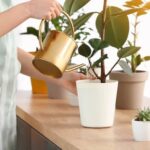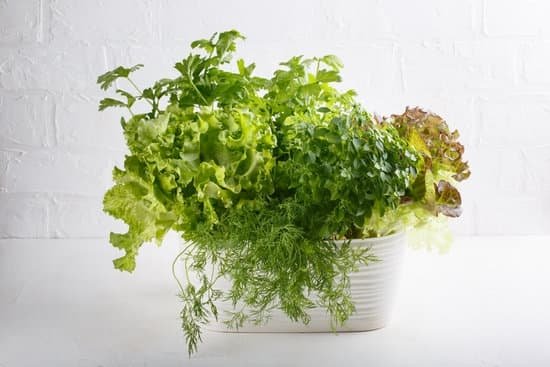Lobelia container gardening ideas offer a picturesque and charming way to elevate your outdoor space. From vibrant blues, purples, pinks, and whites, lobelia plants add a pop of color to any container arrangement. In this guide, we will delve into the world of lobelia container gardening, exploring the various aspects that make these plants perfect for containers.
One of the key considerations when diving into lobelia container gardening is selecting the right container. The size, material, and drainage play vital roles in providing the ideal environment for lobelia plants to thrive. Additionally, understanding the soil and fertilizer requirements for lobelia is crucial to ensure healthy growth and blooming. By choosing the appropriate soil type and feeding schedule, you can encourage robust growth and stunning blooms.
To further enhance your lobelia container gardening experience, it’s essential to provide the proper amount of sunlight and water. Finding the balance between these two elements will contribute to lush foliage and prolific flowering.
With creative design ideas and maintenance tips at your disposal, you’ll be able to craft beautiful arrangements that showcase the beauty and versatility of lobelia plants in containers. Stay tuned as we explore all aspects of lobelia container gardening to help you create a thriving botanical display.
Choosing the Right Container
Lobelia plants are a popular choice for container gardening due to their vibrant colors and cascading growth habit. When it comes to choosing the right container for growing lobelia, there are a few key factors to consider to ensure optimal growth and blooming.
The size of the container is important as lobelia plants have shallow root systems, so a wide but not too deep container is ideal. This will allow the roots to spread out and take up moisture and nutrients efficiently.
In terms of material, lightweight containers such as plastic or resin work well for lobelia as they are easier to move around if needed and retain moisture better than terracotta or clay pots. It is also essential to make sure that the chosen container has adequate drainage holes at the bottom to prevent waterlogging, which can lead to root rot in lobelia plants.
Additionally, placing a layer of small rocks or gravel at the bottom of the container before adding soil can further improve drainage.
Proper drainage is crucial for the success of lobelia plants in containers. Without good drainage, the roots may become waterlogged, leading to poor growth and potential disease issues.
Selecting a container with drainage holes at the bottom is essential, but also consider elevating the pot slightly off the ground using pot feet or bricks to ensure excess water can easily escape. When choosing a container for your lobelia plants, keep in mind these tips on size, material, and drainage for healthy and thriving flowers all season long.
| Key Consideration | Recommendation |
|---|---|
| Container Size | Wide but not too deep container for shallow root system |
| Container Material | Lightweight options like plastic or resin for better moisture retention |
| Drainage | Adequate drainage holes at the bottom with elevation for excess water flow |
Soil and Fertilizer for Lobelia
When it comes to growing lobelia in containers, having the right soil and fertilizer is essential for ensuring healthy growth and vibrant blooms. Lobelia plants thrive in well-draining soil that is rich in organic matter. A good quality potting mix specifically designed for container gardening is ideal for lobelia as it promotes proper drainage while retaining the necessary moisture. Avoid using heavy garden soil, which can lead to waterlogged roots and ultimately harm the plant.
Soil Recommendations
To create the best growing environment for your lobelia plants, consider mixing in some perlite or sand with your potting mix to improve aeration and drainage. Additionally, adding a slow-release fertilizer at planting time can help provide a steady supply of nutrients for your lobelia throughout the growing season. Remember to choose a fertilizer with higher phosphorus content to encourage healthy root development and abundant flowering.
Fertilizer Tips
In addition to incorporating a slow-release fertilizer into the soil at planting, it’s important to feed your container-grown lobelia regularly during the growing season. Consider using a water-soluble fertilizer diluted to half-strength every 2-4 weeks to provide the necessary nutrients for continuous blooming. Be cautious not to over-fertilize, as this can lead to excessive foliage growth at the expense of flowers. Always follow the instructions on the fertilizer packaging for best results.
With the right soil mixture and proper fertilization routine, you can ensure that your lobelia plants are well-nourished and poised for success in their container garden. By paying attention to these crucial aspects of care, you can enjoy an abundance of beautiful blooms throughout the growing season, making your lobelia containers a standout feature in your outdoor space.
Sunlight and Watering Needs
Sunlight Requirements
Lobelia plants thrive in full sun to part shade conditions. When growing lobelia in containers, it is essential to place them in a location where they can receive at least 6 hours of sunlight per day. If you live in a hotter climate, providing some afternoon shade can help prevent the plants from wilting. Be mindful of the sun’s intensity and adjust the placement of your containers accordingly to ensure optimal growth and blooming.
Watering Needs
Proper watering is crucial for the health and success of lobelia plants in containers. These plants prefer consistently moist soil, but they do not like to sit in waterlogged conditions.
It is important to water lobelia regularly, especially during hot summer days when the soil tends to dry out quickly. One tip to ensure proper hydration is to water the plants early in the morning or later in the evening when temperatures are cooler, as this helps minimize evaporation and allows the roots to absorb water more effectively.
Tips for Success
To maintain the ideal balance of sunlight and watering for your lobelia container garden, consider using self-watering containers that have a built-in reservoir. These containers can help regulate moisture levels and reduce the frequency of watering required. Additionally, adding a layer of mulch on top of the soil can help retain moisture and prevent rapid evaporation.
Regularly check the moisture level by inserting your finger into the soil; if it feels dry an inch below the surface, it’s time to water. By following these tips and keeping a close eye on your lobelia plants’ sunlight and watering needs, you can enjoy beautiful blooms all season long.
Creative Design Ideas
Lobelia plants are a charming addition to any container garden, offering a burst of colorful blooms that can brighten up any space. When it comes to designing your lobelia container, the possibilities are endless. One creative idea is to mix different colors of lobelia in the same pot to create a vibrant and dynamic display. For example, pairing deep blue lobelia with bright red or white varieties can create a striking contrast that catches the eye.
In addition to mixing colors, consider incorporating different textures and heights into your lobelia container design. Pairing lobelia with trailing plants like ivy or creeping Jenny can add a cascading effect, while taller plants like salvia or snapdragons can provide height and structure. This layering technique not only adds visual interest but also creates a more dynamic and lush arrangement.
For those looking to maximize limited space, vertical arrangements of lobelia are another innovative option for container gardening. Planting lobelia in hanging baskets or wall planters allows you to enjoy their beautiful blooms even if you’re short on horizontal space. Consider mixing lobelia with other trailing plants like verbena or bacopa for a stunning vertical display that will brighten up fences, walls, or pergolas.
| Lobelia Container Design Ideas | Description |
|---|---|
| Mixing Colors | Pair different colors of lobelia together for a vibrant display. |
| Texture and Height Variation | Incorporate different textures and heights by adding trailing and tall companion plants. |
| Vertical Arrangements | Create stunning vertical displays by planting lobelia in hanging baskets or wall planters. |
Maintenance and Care
Lobelias are popular choices for container gardening due to their vibrant blooms and versatility in various planting arrangements. To keep your lobelia plants thriving in containers, proper maintenance and care are essential. Here are some step-by-step instructions on pruning, deadheading, and pest control to ensure the health and longevity of your lobelia plants.
When it comes to pruning lobelia in containers, it is essential to regularly trim back any leggy or overgrown stems to encourage new growth and maintain a compact, bushy plant shape. Use clean, sharp shears to snip off any yellowing or damaged foliage as well.
Deadheading – the process of removing spent flowers – is also crucial to prevent the plant from putting energy into seed production instead of blooming. Simply pinch off faded flowers regularly to promote continuous blooming throughout the growing season.
Pest control is another important aspect of caring for lobelia plants in containers. These plants are susceptible to aphids, slugs, snails, and spider mites, which can damage their foliage and blooms if left untreated. To combat pests naturally, consider introducing beneficial insects like ladybugs or using organic insecticidal soap.
Regularly inspect your lobelia plants for signs of pest infestation and take appropriate measures promptly to ensure they remain healthy and pest-free. By following these maintenance and care practices, you can enjoy beautiful and flourishing lobelia plants in your container garden all season long.
- Regularly prune back leggy stems.
- Deadhead spent flowers to promote continuous blooming.
- Inspect plants for pests regularly.
- Introduce beneficial insects for natural pest control.
Seasonal Tips
Transitioning lobelia plants through different seasons is essential to ensure their health and vitality year-round. By following some simple tips and tricks, you can help your lobelia thrive in all types of weather conditions.
During the winter months, it’s important to protect your lobelia plants from harsh cold temperatures. Consider moving your containers to a sheltered area or using insulating materials like burlap or straw to keep the roots warm. Additionally, reducing watering frequency during the winter can help prevent root rot caused by soggy soil.
In the summer, when temperatures rise and rainfall may be scarce, it’s crucial to maintain proper watering practices for your lobelia plants. Make sure to check the moisture levels in the soil regularly and water deeply when needed. Adding a layer of mulch on top of the soil can also help retain moisture and regulate temperature fluctuations, ensuring that your lobelia stays hydrated and healthy throughout the hot months.
To further support your lobelia plants through seasonal changes, consider supplementing their nutrition with a balanced fertilizer that promotes blooming and overall plant growth. Pay attention to any signs of stress or pest infestations during transitions between seasons, and address them promptly to keep your lobelia thriving in its container garden. By implementing these seasonal tips, you can enjoy beautiful and vibrant lobelia displays year-round.
Showcase of Lobelia Varieties
When it comes to selecting the perfect lobelia cultivar for your container gardening project, there are numerous options to choose from, each with its own unique characteristics and appeal. Whether you prefer the vibrant shades of ‘Crystal Palace’ lobelia or the delicate blooms of ‘Cambridge Blue,’ there is a variety to suit every gardener’s taste and container design.
Consider factors such as growth habits, flower colors, and overall size when making your selection to ensure a harmonious arrangement in your containers.
For those looking to add a touch of drama and elegance to their container displays, ‘Waterfall Blue Ice’ lobelia cascades beautifully over the edges of pots and hanging baskets, creating a stunning waterfall effect that is sure to capture attention. On the other hand, compact varieties like ‘Riviera Midnight Blue’ are perfect for smaller containers or mixed arrangements, adding pops of intense color in tight spaces.
By understanding the unique qualities of each lobelia cultivar, you can create visually striking compositions that elevate your container gardening to new heights.
With the wide range of lobelia varieties available for container gardening, the possibilities for creativity and expression are endless. Experiment with different combinations of colors, textures, and heights to design eye-catching displays that reflect your personal style.
Whether you opt for a monochromatic scheme with ‘Riviera Sky Blue’ or a contrasting palette with ‘Sapphire Dark Blue,’ incorporating diverse lobelia cultivars into your containers promises a visually rewarding experience that will delight both novice and experienced gardeners alike. So seize this opportunity to explore the beauty and versatility of lobelia plants in your container gardens today.
Frequently Asked Questions
What Pairs Well With Lobelia?
Lobelia pairs well with other annual flowers like petunias, geraniums, and alyssum. Its cascading nature makes it a perfect choice for hanging baskets or mixed containers for a pop of color.
Does Lobelia Like Sun or Shade?
Lobelia is a versatile plant that can thrive in both sun and partial shade, but it generally prefers partial shade in hot climates to prevent the delicate flowers from wilting. In cooler climates, lobelia can handle full sun quite well.
How Often Do You Water Potted Lobelia?
When it comes to watering potted lobelia, it’s crucial to keep the soil consistently moist but not waterlogged. You should water your lobelia when the top inch of the soil feels dry to the touch, typically every 2-3 days depending on the temperature and humidity levels.
However, always adjust based on your specific growing conditions to prevent overwatering or underwatering issues.

Welcome to my gardening blog! I am passionate about plants and enjoy sharing my knowledge and experiences with others. In this blog, I will write about everything related to gardening, from tips on how to get started to updates on my own garden projects.





